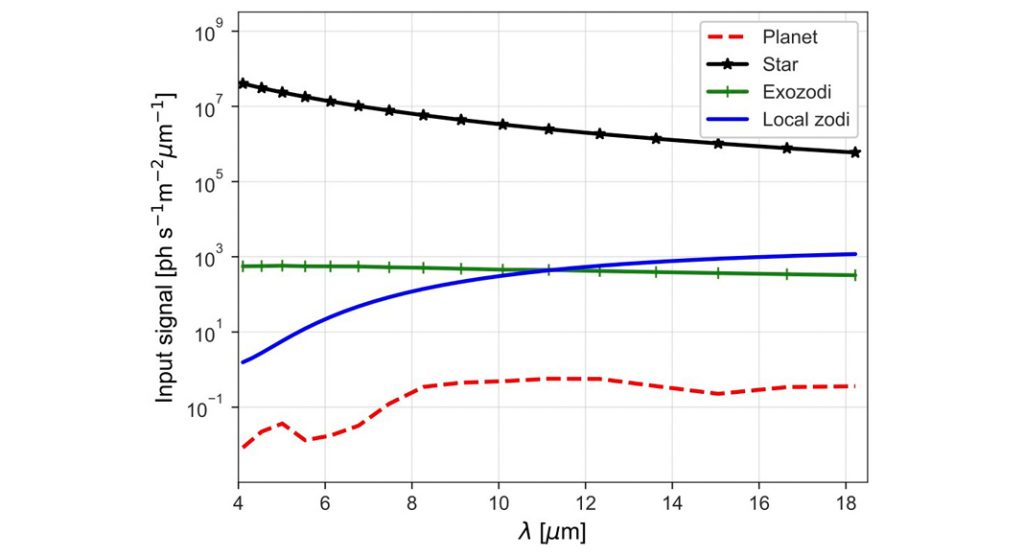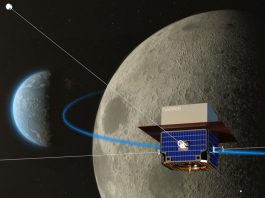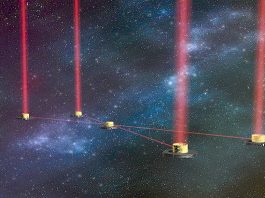Dr Sascha P Quanz, Professor in the Department of Physics at ETH Zurich, discusses the current status of the LIFE space mission to detect life on exoplanets and the challenges that lie ahead.
The recent report1 from the European Space Agency’s (ESA) Senior Committee on the long-term planning of the agency’s Science Programme ranked the detection and characterisation of terrestrial exoplanets – planets orbiting stars other than the Sun – as one of the top themes to be investigated further in the context of future L-class missions. This is positive news for all scientific disciplines, and for anyone interested in exploring the prospects for life beyond the Solar System. What is even more interesting, from the perspective of the LIFE initiative – which has the goal to develop the science, the technology and a roadmap for such an ambitious space mission – is the following sentence in the report: “the characterisation of temperate exoplanets in the mid-infrared, through a first spectrum of direct thermal emission from exoplanet atmospheres to better understand if they harbour truly habitable surface conditions, would be an outstanding breakthrough.” This statement, explicitly referring to the detection of the exoplanets’ thermal emission at mid-infrared wavelengths, put a mission concept, as foreseen by the LIFE initiative, centre stage.
Observational challenges
To directly detect the thermal radiation of exoplanets orbiting stars tens of light-years away requires three key ingredients: (1) sufficient spatial resolution to separate the planets’ emission from that of its host star; (2) sufficient contrast to detect the planets’ pale shimmer next to the 106 to 107 brighter glare of the star; and (3) sufficient sensitivity to effectively collect the planets’ weak photon flux (Fig. 1 further illustrates points 2 and 3). To tackle these challenges, the LIFE initiative proposes a free-flying, four-aperture nulling interferometer mission concept 5,6. The underlying measuring principle is challenging and requires controlling the intensity of the four interfering beams to better than a few percent and their wavefronts to better than a few nanometres 2. And this over several hours, for an instantaneous wavelength coverage between 4 and 18 microns and with free-flying spacecraft separated by tens to hundreds of meters. As noted in a recent publication 5, however, significant progress in key technologies has been made over the past 10 to 15 years. Still, to further reduce risk, complexity, and mission cost, and to comply with all scientific objectives, further R&D in specific areas is needed within the LIFE initiative.

Enabling technologies
Three relevant areas are discussed here.
1) Formation-flying: high-precision, autonomous formation flying of five spacecraft that regularly must change formation has never been done before. As such, it will spark developments in related fields of space exploration, where aspects like operation/calibration of distributed measurement systems, autonomy, and optimised and resource-saving geometry control are essential. This could be relevant for applications in Earth observations via coordinated swarms of satellites or coordinated rover flotillas to explore bodies of the solar system. After the success of the PRISMA mission 3, a formation flying tech demonstrator, the next step will be ESA’s Proba-3 mission 4
that will cover many critical aspects of formation flying for LIFE. Proba-3 will feature two spacecraft with ~1.5m length and masses of 200 to 300 kg and will maintain a virtual ‘rigid structure’ with millimetre and arcsecond relative precision. Proba-3 aims specifically at demonstrating manoeuvres relevant for LIFE, such as station-keeping at distances up to 250m, approaching/separating in formation without losing millimetre precision, re-pointing the formation, and the combination of station keeping, resizing and re-targeting manoeuvres 7. LIFE would require expanding the technology to a five-spacecraft formation.
2) Mid-infrared detectors: The low photon rate of exoplanets (Fig. 1) and the need to integrate for many hours or even days, puts strong requirements on the detector in terms of quantum efficiency, low read-out noise and dark current, and high stability. HgCdTe detectors (as, for instance, used in NEOCam) and Si:As detectors (as used in the MIRI instrument onboard the James Webb Space Telescope) are space-qualified, but at the moment neither technology covers the full LIFE wavelength range and fulfils all criteria. An interesting alternative could be photon counting kinetic inductance detectors. Recent developments suggest that, in principle, photon counting between between 2 and 20 microns with a spectral resolution of a few tens should be doable 8 9. Dedicated test setups are needed to further investigate this direction and it needs to be verified if the demanding cooling requirements for such detectors are feasible for LIFE.
3) Mid-infrared photonics and cryogenic opto-mechanics: The baseline instrument concept for LIFE foresees the use of bulk optics. In this case, accurate achromatic phase shifts, beam combination, and intensity and wavefront control will require a complex, low-loss optical layout, likely including cryogenic deformable mirrors and single-mode fibres. The complexity, mass and size of the instrument could be significantly reduced, if high-quality integrated optics chips were available in the required wavelength range because, in principle, these chips combine the functionality of beam splitters, phase shifters, and beam combiners. Materials for mid-infrared applications are currently being tested10 but total wavelength range, instantaneous wavelength coverage and overall throughput still need to be optimised.
The time is now
Given the positive prospects that a mission like LIFE might be selected for a future L-class slot in ESA’s Science Programme, it is now time to join forces, secure funding and effectively coordinate and accelerate ongoing R&D efforts and initiate new ones. Some of the LIFE-related technologies will inspire applications and generate impact beyond the LIFE mission we cannot even imagine today. So, it is time to get started: disruptive technologies are waiting to be developed and dozens of nearby Earth-like planets are waiting to be discovered.
References
2. Root-mean-square
3. earth.esa.int/web/eoportal/satellite-missions/p/prisma-prototype
4. www.esa.int/Enabling_Support/Space_Engineering_Technology/Proba_Missions/Proba-3_Mission3
6. www.innovationnewsnetwork.com/searching-beyond-the-solar-system-for-life-on-exoplanets/11631/
7. https://digitalcommons.usu.edu/smallsat/2020/all2020/105/
Please note, this article will also appear in the eighth edition of our quarterly publication.









